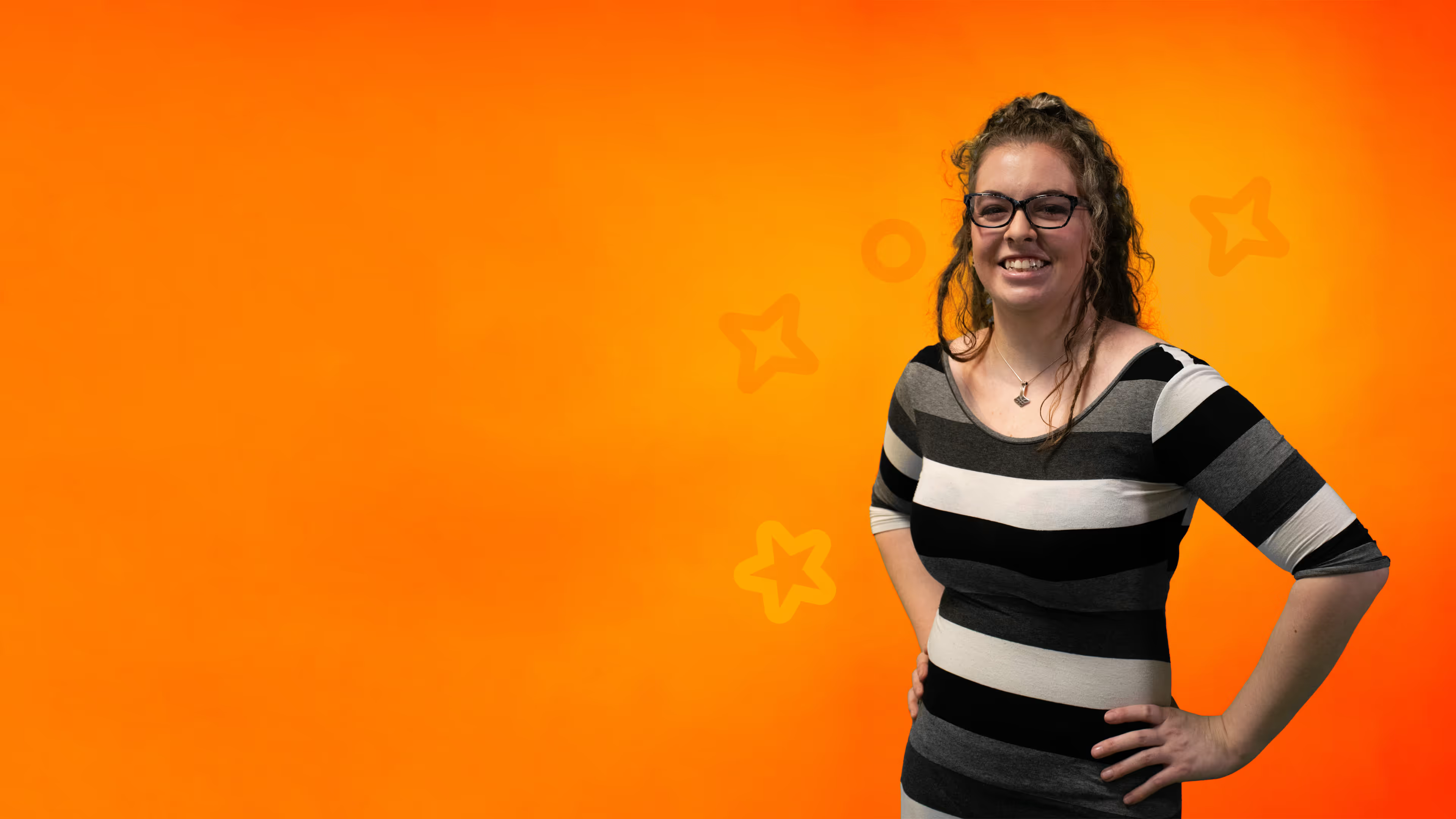A designer, researcher, and unapologetic colour nerd. I hold a Master of Design in Inclusive Design from OCAD University (Class of 2025). Since 2020, I’ve worked full-time as a freelance designer, tackling a range of projects that include brand identity, infographics, social media, event planning, and multi-platform campaign development.
My work lives at the intersection of accessibility, culture, and visual research. I’m fascinated by how we see the world (literally and metaphorically) and how colour, symbolism, and identity shape our understanding of it. I’ve mapped global colour traditions, developed plans for inclusive washrooms, and created websites and marketing assets. My goal remains the same: to design communication that transcends borders and barriers.

I grew up in the salty forests of Vancouver Island on the west coast of Canada, where ocean mist clings to everything and the trees are older than most North American cities. I completed a Bachelor of Design at Vancouver Island University, following a Communications Design Diploma at North Island College. Before and during school, I spent over a decade in customer service: bartending, retail, and ski rentals. That chapter taught me adaptability, empathy, and how to lead under pressure.
My backyard also happened to be an animation studio. My dad worked in the industry for over 30 years, and while he flipped through storyboards and wrangled tight deadlines, I listened to voice actor playbacks like bedtime stories. That behind-the-scenes magic shaped how I understand storytelling: layered, collaborative, and full of complexity.
Theatre also played a big role. I stepped on stage at age five for my first community production, His Knights and Their Ladies. By ten, I was backstage painting sets and running lights. I’ve tried my hand at nearly every aspect of theatre, and I still work behind the scenes today.
My background is a little rebellious and a little resilient. I’m a third-generation Polish-Canadian: my grandfather survived WWII as a prisoner of war before immigrating to Canada. On the other side, I descend from Rob Roy MacGregor, a Gaelic rebel and Jacobite freedom fighter who resisted British rule over the Scottish Highlands. Survival, grit, and mischief are baked into my bloodline, and yes, that shows up in my design too.
These days, I live in downtown Toronto, where the trees have turned to steel and the moss is mostly graffiti. I share life with my very energetic dog, Piper, and a rotating schedule of passion projects. For five years, I’ve worked with the Comox Valley Youth Music Centre, a nonprofit arts organization, wearing many hats: Graphic Designer, Webmaster, Social Media Coordinator, Event Planner, and Registrar. I also volunteer at FanExpo and Comicon, usually wrangling celebrity guests or keeping lines of excited fans moving smoothly.
I collect hobbies like it’s a hobby: ceramics, crochet, gaming, baking... One of my favourites lately is my personal challenge to see a movie in theatres once a week. It’s pushed me to explore genres I wouldn’t usually choose, and it’s become a surprisingly joyful ritual. I’m endlessly curious and happiest when I’m learning; not necessarily in a classroom, but through experience. You’ll often find me at a museum, gallery, exhibition, or cultural event, soaking up inspiration, wandering through history, or chasing stories in all their weird and wonderful forms.
Long-term, I dream of working in film or television as a visual researcher, helping bring historically and culturally accurate worlds to life: props, set design, styling, and all the tiny details that make stories feel lived in. Until then, you’ll probably find me deep in a research rabbit hole, walking Piper, or nerding out about pigment history and signage over a matcha latte.
Inclusive Design isn’t a trend — it’s a commitment.
Inclusive Design is about creating experiences that reflect the full range of human diversity, including ability, culture, language, age, gender, and more. It’s not just about checking off accessibility boxes. It’s about designing with flexibility, context, and care. Instead of targeting an “average” user, it focuses on the edges, because when you build for those most often excluded, you often end up improving things for everyone. It also leaves room for change, because people’s needs evolve over time.
I use methods that invite real people, their stories, cultures, and lived experiences into the design process. Some of the approaches I’ve found most valuable are art-based inquiry, multi-sensory design, and comparative analysis. I’ve also worked with co-design, community mapping, visual journaling, and storytelling-based methods, among others. Whether I’m building a toolkit or creating a brand, I focus on listening early, collaborating often, and prototyping with real-world feedback in mind.
Co-design means making things with people, not for them. It invites folks with lived experience into the design process from the start, not just as feedback at the end. That usually means sharing ideas, sketching together, and having honest conversations about what works and what doesn’t. The result is always more relevant and respectful.
Not quite. Accessibility is about compliance, Universal Design aims for a one-size-fits-all approach, and Inclusive Design adapts to people, especially those who are often excluded.
Colour affects perception, emotion, and usability. I design with colour contrast, cultural meaning, and vision differences in mind, because red doesn’t mean the same thing to everyone (or look the same, either).
Culture shapes how we read everything, from layout and icons to colours and tone. I ensure that my design respects this, so it actually connects.
Design should be rooted in understanding. Research helps me learn what matters to people, how they interact with systems, and what they need. Whether I’m mapping cultural colour systems or studying real-world user behaviour, it keeps me grounded in relevance rather than assumptions.